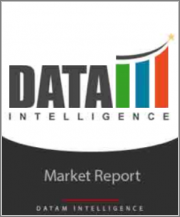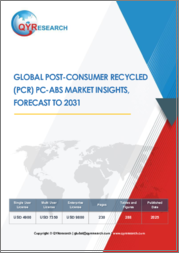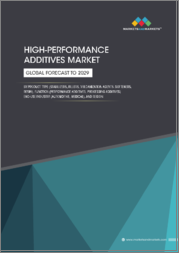
|
시장보고서
상품코드
1297764
세계의 플라스틱 시장(2023-2030년)Global Plastics Market - 2023-2030 |
||||||
시장 개요
세계 플라스틱 시장은 2022년 5,255억 달러, 2030년 6,760억 달러에 달할 것으로 예상되며, 2023-2030년 예측 기간 동안 3.2%의 CAGR을 기록할 것으로 예상됩니다. 세계 플라스틱 시장에서 가장 중요한 신흥 응용 분야 중 하나는 3D 프린팅의 부상입니다. 많은 제조업체들이 적층 가공을 중심으로 생산 장비를 설계하기 시작했습니다.
세계 플라스틱 시장은 새로운 플라스틱 복합재료가 항공우주, 생물 의학, 자동차 공학 분야에서 점점 더 많이 활용되면서 첨단 기술 산업의 수요가 증가할 것으로 예상됩니다. 예를 들어, 자동차 제조업체인 아우디는 2022년 11월에 자사의 전기차 Q8 e-tron의 안전벨트 버클을 재생 플라스틱으로 생산할 것이라고 발표했습니다.
2023년 5월, 유엔(UN)은 2040년까지 전 세계 플라스틱 오염을 80% 감축하는 것을 목표로 하는 보고서를 발표했습니다. 보고서는 순환경제로의 전환을 통해 약 1조 2,000억 달러의 비용을 절감할 수 있을 것으로 예상했습니다.
시장 역학
저렴한 소비재에 대한 전 세계 수요 증가
세계 인구가 증가함에 따라 다양한 상품과 서비스에 대한 수요도 증가하고 있습니다. 도시화는 인구 증가와 밀접한 관련이 있으며, 많은 사람들이 더 나은 기회와 생활 수준 향상을 위해 도시로 이주하고 있습니다. 소득수준의 상승은 개발도상국에서 새롭게 부상하는 중산층으로부터 저렴하고 경제적인 소비재에 대한 수요를 창출하고 있습니다.
플라스틱은 현대 소비재에 사용되는 주요 소재이기 때문에 이러한 수요를 충족시키는 데 매우 중요한 역할을 합니다. 플라스틱은 연성, 내화학성, 가공이 용이하기 때문에 제조업체는 일반적으로 금속 대신 플라스틱을 사용합니다. 장난감, 가정용품, 의류, 저가의 가전제품 등은 플라스틱을 많이 사용하는 주요 소비재 중 일부입니다.
플라스틱 오염에 대한 우려의 증가
플라스틱 오염은 최근 몇 년간 눈에 띄게 증가하고 있습니다. 유엔환경계획(UNEP)의 추산에 따르면, 현재 해양에는 7,500만-1억 9,900만 톤의 플라스틱 폐기물이 존재한다고 합니다. 또한 유네스코는 연간 800만 톤에서 1,000만 톤에 가까운 플라스틱이 바다로 흘러들어가는 것으로 추정하고 있습니다. 플라스틱 폐기물이 생태계, 해양 생물, 그리고 인간의 건강에 미치는 악영향에 대한 인식이 높아지면서 소비자의 인식과 정부의 규제가 변화하고 있습니다.
세계 각국 정부는 플라스틱 금지, 일회용 플라스틱 제한, 재활용 및 순환 경제 촉진 등 플라스틱 오염에 대응하기 위한 조치를 시행하고 있습니다. 예를 들어, 인도 정부는 2022년 7월 전국적으로 일회용 플라스틱을 금지했습니다. 중국은 2022년 11월, 2025년까지 일상 생활에서 각종 플라스틱 제품을 완전히 제거할 계획을 발표했습니다.
이 조치는 플라스틱 소비를 줄이고 지속가능한 대안을 장려하며 폐기물 관리를 개선하는 것을 목표로 합니다. 소비자의 취향도 변화하고 있으며, 친환경적인 선택과 지속가능한 제품에 대한 수요가 증가하고 있습니다. 현재 많은 소비자들이 일회용 플라스틱을 대체할 수 있는 대안을 적극적으로 찾고 있으며, 환경 친화적인 선택을 우선시하고 있습니다.
COVID-19 영향 분석
COVID-19의 대유행은 전 세계 플라스틱 시장에 다양한 영향을 미쳤습니다. 초기에는 개인보호장비(PPE), 의료용품, 생필품 포장재 등 특정 플라스틱 제품에 대한 수요가 급증했습니다. 위생과 안전을 보장하기 위한 일회용품에 대한 수요가 증가하면서 플라스틱 시장이 일시적으로 상승했습니다.
그러나 전염병은 플라스틱 산업에도 도전을 가져왔습니다. 세계 공급망의 혼란, 공장 가동 중단, 소비 지출 감소는 비필수품 플라스틱 제품의 수요와 생산에 영향을 미쳤습니다. 자동차, 건설, 소비재 등 산업이 크게 침체되어 플라스틱 수요가 감소했습니다.
AI의 영향
인공지능(AI)이 세계 플라스틱 시장에 미치는 영향은 주로 제조 기술 개선에서 나타날 것으로 보입니다. 고급 기계 학습 알고리즘은 플라스틱 폐기물을 줄이기 위해 제조 공정을 최적화하여 플라스틱 오염의 영향을 어느 정도 완화 할 수 있습니다.
플라스틱 산업에서 AI의 또 다른 응용 사례는 지속가능한 원료에서 추출한 새로운 바이오플라스틱의 개발입니다. 현재 상업용 바이오플라스틱 생산은 상대적으로 높은 에너지 사용량으로 인해 제한되어 있으며, AI는 바이오플라스틱의 대규모 상업적 생산을 가능하게 하기 위해 생산 공정을 수정하고 최적화하는 데 도움이 될 것으로 보입니다.
우크라이나-러시아 전쟁의 영향
우크라이나-러시아 전쟁과 지정학적 긴장은 간접적으로 세계 플라스틱 시장에 영향을 미칩니다. 러시아는 화학 원료의 중요한 생산국이기 때문에 분쟁은 특정 세계 공급망, 특히 석유화학 원료의 공급망에 혼란을 일으켰습니다. 원료 공급의 혼란은 유럽 시장의 가격 변동으로 이어지고 있습니다. 또한 러시아의 에너지 공급이 중단되면서 유럽의 플라스틱 생산업체들의 생산 비용도 크게 상승했습니다.
현재 상황은 아시아 생산자들에게 시장 점유율을 확대할 수 있는 절호의 기회입니다. 아시아 플라스틱 제조업체는 생산 비용이 가장 낮고 생산 능력도 큽니다. 그러나 아시아 플라스틱 생산의 대부분은 국내 및 지역 수요를 충족시키는 데 사용되기 때문에 수출량은 주로 예비 생산 능력의 가동률에 따라 달라집니다.
목차
제1장 조사 방법과 조사 범위
제2장 정의와 개요
제3장 주요 요약
제4장 시장 역학
- 영향요인
- 성장 촉진요인
- 신흥 국가의 산업화 진전
- 3D 프린팅 채용 증가
- 저렴한 소비재에 대한 세계의 수요 증가
- 성장 억제요인
- 환경에 대한 우려에 의한 규제 강화
- 플라스틱 오염에 대한 우려 고조
- 기회
- 영향 분석
- 성장 촉진요인
제5장 산업 분석
- Porter's Five Forces 분석
- 공급망 분석
- 가격 분석
- 규제 분석
제6장 COVID-19 분석
제7장 유형별
- 폴리에틸렌(PE)
- 폴리프로필렌(PP)
- 폴리에틸렌 테레프탈레이트(PET)
- 폴리염화비닐(PVC)
- 아크릴로니트릴 부타디엔 스티렌(ABS)
- 폴리아미드(PA)
- 폴리카보네이트(PC)
- 폴리우레탄(PU)
- 폴리스티렌(PS)
- 기타
제8장 최종사용자별
- 포장
- 자동차·수송
- 인프라·건설
- 소비재
- 헬스케어·의약품
- 전기·전자
- 텍스타일
- 기타
제9장 지역별
- 북미
- 미국
- 캐나다
- 멕시코
- 유럽
- 독일
- 영국
- 프랑스
- 이탈리아
- 스페인
- 기타 유럽
- 남미
- 도미니카공화국
- 브라질
- 아르헨티나
- 기타 남미
- 아시아태평양
- 중국
- 인도
- 일본
- 호주
- 기타 아시아태평양
- 중동 및 아프리카
제10장 경쟁 상황
- 경쟁 시나리오
- 시장 상황/점유율 분석
- M&A 분석
제11장 기업 개요
- BASF SE
- 기업 개요
- 제품 포트폴리오와 개요
- 재무 개요
- 주요 발전
- LyondellBasell Industries Holdings B.V.
- INEOS
- SABIC
- Borouge
- Borealis AG
- Reliance Industries Ltd
- Braskem
- Exxon Mobil Corporation
- Formosa Plastics Corporation
제12장 부록
ksm 23.07.11Market Overview
Global Plastics Market reached US$ 525.5 billion in 2022 and is expected to reach US$ 676 billion by 2030, growing with a CAGR of 3.2% during the forecast period 2023-2030. One of the most critical emerging applications for the Global Plastics Market is the rise of 3D printing. Many manufacturers have started designing production units around additive manufacturing.
The Global Plastics Market is expected to witness rising demand from advanced technology industries as new plastic composite materials are increasingly utilized in aerospace, biomedical and automotive engineering fields. For instance, in November 2022, the automaker Audi announced that seatbelt buckles in its Q8 e-tron electric vehicle will be manufactured from recycled plastics.
One of the major shifts likely to occur in the global market, is the increased adoption of circular economy. In May 2023, the United Nations (UN) released a report targeting an 80% reduction in global plastic pollution by 2040. The report states that an estimated savings of US$ 1.2 trillion could be achieved through a switch to a circular economy.
Market Dynamics
Rising Global Demand for Cheap Consumer Goods
As the global population increases, so does the demand for various goods and services. Urbanization is closely linked to population growth, as more people are moving to cities for better opportunities and improved living standards. Rising income levels have created a demand for cheap and economical consumer goods from the newly emerging middle class in developing countries.
Plastics play a crucial role in meeting these demands as they are the prime material used in modern consumer goods. Manufacturers typically use plastics instead of metals since they are more ductile, chemically resistant and easier to process. Toys, houseware items, clothing items, and low-value home appliances are some of the major consumer goods that extensively use plastics.
Increasing Concerns about Plastic Pollution
Plastic pollution has increased significantly in recent years. The United Nations Environment Programme (UNEP) estimates that 75-199 million tonnes of plastic waste is currently found in the oceans. Furthermore, UNESCO estimates that nearly 8-10 million tonnes of plastic ends up in the ocean annually. Increasing awareness of the negative impacts of plastic waste on ecosystems, marine life and human health has led to a shift in consumer attitudes and government regulations.
Governments globally are implementing measures to address plastic pollution, including plastic bans, restrictions on single-use plastics, and promoting recycling and circular economy practices. For instance, the Indian government banned single-use plastics nationwide in July 2022. In November 2022, China unveiled plans to eliminate various plastic items from daily life by 2025 completely.
The actions aim to reduce plastic consumption, encourage sustainable alternatives and improve waste management. Consumer preferences are also changing, with a growing demand for eco-friendly options and sustainable products. Many consumers now actively seek alternatives to single-use plastics and prioritize environmentally conscious choices.
COVID-19 Impact Analysis
The COVID-19 pandemic had a mixed impact on the global plastics market. Initially, there was a surge in demand for certain plastic products such as personal protective equipment (PPE), medical supplies and packaging materials for essential goods. The increased need for single-use items to ensure hygiene and safety temporarily boosted the plastics market.
However, the pandemic also presented challenges for the plastics industry. Disruptions in global supply chains, factory shutdowns and reduced consumer spending affected the demand and production of non-essential plastic products. Industries such as automotive, construction and consumer goods experienced a significant decline, leading to decreased demand for plastics.
AI Impact
The impact of artificial intelligence (AI) on the Global Plastics Market will be mainly felt in improvements of manufacturing techniques. Advanced machine-learning algorithms can optimize manufacturing processes to reduce plastic waste, thereby mitigating the impact of plastic pollution to some extent.
Another possible application for AI in the plastics industry could be for the development of new bioplastics derived from sustainable feedstock. Currently, commercial bioplastic production is limited due to relatively high energy usage. AI can help to modify and optimize the production process to make large-scale commercial production of bioplastics viable.
Ukraine-Russia War Impact
The Ukraine-Russia war and geopolitical tensions indirectly affect the global plastics market. The conflict disrupted certain global supply chains, particularly for petrochemical feedstocks, as Russia is a significant producer of chemical raw materials. Disruptions in feedstock availability have led to price volatility in the European market. Furthermore, disrupting Russian energy supplies have also led to drastic increase in production costs for European plastic producers.
The current situation presents an ideal opportunity for Asian producers to expand their market share. Asian plastic producers have some of the lowest production costs and have large production capacity. However, volume of exports will mainly depend on spare production capacity utilization, since most Asian plastic production is used to meet domestic and regional demand.
Segment Analysis
The global plastics market is segmented based on type, end-user and region.
Rise in Global E-Commerce Activities helps Packaging to Achieve a Significant Share in the End-User Segment
The growth of online shopping has created a surge in demand for packaging materials to protect and deliver goods to consumers worldwide. E-commerce packaging serves several purposes, including product protection, branding and customer experience.
Plastics are widely used in e-commerce packaging due to their durability, lightweight nature, versatility and cost-effectiveness. It offers advantages such as resistance to moisture, flexibility in design and the ability to incorporate branding elements.
Plastic packaging materials commonly used in e-commerce include polyethylene (PE) bags, bubble wraps, air pillows, shrink films and polyethylene terephthalate (PET) bottles. The materials help safeguard products during transportation, reduce the risk of damage and enhance the overall customer experience. The growth of global e-commerce, especially in emerging countries, is expected to increase demand for plastic packaging articles further.
Geographical Analysis
North America is Expected to Occupy a Significant Share of the Global Plastics Market
North America has a robust manufacturing base, advanced technologies and a strong focus on innovation. Although many manufacturing industries have been outsourced to Asia-Pacific, the region still retains significantly advanced manufacturing capabilities in the automotive, aerospace and defense industries.
The automotive industry is a major demand generator for the North American plastics market and has undergone dramatic changes in recent years. U.S. automakers are increasingly shifting to electric vehicle (EV) production on the back of government subsidies. For instance, in 2023, the U.S. government announced a US$ 5 billion discretionary grant for setting up electric vehicle infrastructure nationwide.
Many automakers, such as Tesla, GM and Ford, have launched electric vehicle models. Multinational automakers such as Volkswagen, BMW and Mercedes Benz are also launching new electric vehicles for the North American market. The demand for electric vehicles (EVs) and advanced technologies in the automotive sector presents further opportunities for using plastics in battery casings, interiors and exterior parts.
The defense industry is also generating demand for advanced plastics components, mainly due to the production expansion of combat and surveillance unmanned aerial vehicles to cater to export orders. For instance, in February 2023, India initiated talks with the U.S. to acquire 18 MQ-9B predator drones worth US$ 3 billion.
Competitive Landscape
The major global players include: BASF SE, LyondellBasell Industries Holdings B.V., INEOS, SABIC, Borouge, Borealis AG, Reliance Industries Ltd, Braskem, Exxon Mobil Corporation and Formosa Plastics Corporation.
Why Purchase the Report?
- To visualize the global plastics market segmentation based on type, end-user and region, and understand key commercial assets and players.
- Identify commercial opportunities by analyzing trends and co-development.
- Excel data sheet with numerous data points of plastics market-level with all segments.
- PDF report consists of a comprehensive analysis after exhaustive qualitative interviews and an in-depth study.
- Product mapping available as Excel consisting of key products of all the major players.
The Global Plastics Market Report Would Provide Approximately 50 Tables, 59 Figures And 195 Pages.
Target Audience 2023
- End-User Industries
- Plastics Manufacturers
- Industry Investors/Investment Bankers
- Research Professionals
- Emerging Companies
Table of Contents
1. Methodology and Scope
- 1.1. Research Methodology
- 1.2. Research Objective and Scope of the Report
2. Definition and Overview
3. Executive Summary
- 3.1. Snippet by Type
- 3.2. Snippet by End-User
- 3.3. Snippet by Region
4. Dynamics
- 4.1. Impacting Factors
- 4.1.1. Drivers
- 4.1.1.1. Growing Industrialization of Developing Countries
- 4.1.1.2. Increasing Adoption of 3D Printing
- 4.1.1.3. Rising Global Demand for Cheap Consumer Goods
- 4.1.2. Restraints
- 4.1.2.1. Tightening Regulatory Measures due to Environmental Concerns
- 4.1.2.2. Increasing Concerns about Plastic Pollution
- 4.1.3. Opportunity
- 4.1.4. Impact Analysis
- 4.1.1. Drivers
5. Industry Analysis
- 5.1. Porter's Five Force Analysis
- 5.2. Supply Chain Analysis
- 5.3. Pricing Analysis
- 5.4. Regulatory Analysis
6. COVID-19 Analysis
- 6.1. Analysis of COVID-19
- 6.1.1. Scenario Before COVID
- 6.1.2. Scenario During COVID
- 6.1.3. Scenario Post COVID
- 6.2. Pricing Dynamics Amid COVID-19
- 6.3. Demand-Supply Spectrum
- 6.4. Government Initiatives Related to the Market During Pandemic
- 6.5. Manufacturers Strategic Initiatives
- 6.6. Conclusion
7. By Type
- 7.1. Introduction
- 7.1.1. Market Size Analysis and Y-o-Y Growth Analysis (%), By Type
- 7.1.2. Market Attractiveness Index, By Type
- 7.2. Polyethylene (PE)*
- 7.2.1. Introduction
- 7.2.2. Market Size Analysis and Y-o-Y Growth Analysis (%)
- 7.3. Polypropylene (PP)
- 7.4. Polyethylene Terephthalate (PET)
- 7.5. Polyvinyl Chloride (PVC)
- 7.6. Acrylonitrile Butadiene Styrene (ABS)
- 7.7. Polyamide (PA)
- 7.8. Polycarbonate (PC)
- 7.9. Polyurethane (PU)
- 7.10. Polystyrene (PS)
- 7.11. Others
8. By End-User
- 8.1. Introduction
- 8.1.1. Market Size Analysis and Y-o-Y Growth Analysis (%), By End-User
- 8.1.2. Market Attractiveness Index, By End-User
- 8.2. Packaging *
- 8.2.1. Introduction
- 8.2.2. Market Size Analysis and Y-o-Y Growth Analysis (%)
- 8.3. Automotive & Transportation
- 8.4. Infrastructure & Construction
- 8.5. Consumer Goods
- 8.6. Healthcare & Pharmaceuticals
- 8.7. Electrical & Electronics
- 8.8. Textiles
- 8.9. Others
9. By Region
- 9.1. Introduction
- 9.1.1. Market Size Analysis and Y-o-Y Growth Analysis (%), By Region
- 9.1.2. Market Attractiveness Index, By Region
- 9.2. North America
- 9.2.1. Introduction
- 9.2.2. Key Region-Specific Dynamics
- 9.2.3. Market Size Analysis and Y-o-Y Growth Analysis (%), By Type
- 9.2.4. Market Size Analysis and Y-o-Y Growth Analysis (%), By End-User
- 9.2.5. Market Size Analysis and Y-o-Y Growth Analysis (%), By Country
- 9.2.5.1. The U.S.
- 9.2.5.2. Canada
- 9.2.5.3. Mexico
- 9.3. Europe
- 9.3.1. Introduction
- 9.3.2. Key Region-Specific Dynamics
- 9.3.3. Market Size Analysis and Y-o-Y Growth Analysis (%), By Type
- 9.3.4. Market Size Analysis and Y-o-Y Growth Analysis (%), By End-User
- 9.3.5. Market Size Analysis and Y-o-Y Growth Analysis (%), By Country
- 9.3.5.1. Germany
- 9.3.5.2. The UK
- 9.3.5.3. France
- 9.3.5.4. Italy
- 9.3.5.5. Spain
- 9.3.5.6. Rest of Europe
- 9.4. South America
- 9.4.1. Introduction
- 9.4.2. Key Region-Specific Dynamics
- 9.4.3. Market Size Analysis and Y-o-Y Growth Analysis (%), By Type
- 9.4.4. Market Size Analysis and Y-o-Y Growth Analysis (%), By End-User
- 9.4.5. Market Size Analysis and Y-o-Y Growth Analysis (%), By Country
- 9.4.5.1. Dominican Republic
- 9.4.5.2. Brazil
- 9.4.5.3. Argentina
- 9.4.5.4. Rest of South America
- 9.5. Asia-Pacific
- 9.5.1. Introduction
- 9.5.2. Key Region-Specific Dynamics
- 9.5.3. Market Size Analysis and Y-o-Y Growth Analysis (%), By Type
- 9.5.4. Market Size Analysis and Y-o-Y Growth Analysis (%), By End-User
- 9.5.5. Market Size Analysis and Y-o-Y Growth Analysis (%), By Country
- 9.5.5.1. China
- 9.5.5.2. India
- 9.5.5.3. Japan
- 9.5.5.4. Australia
- 9.5.5.5. Rest of Asia-Pacific
- 9.6. Middle East and Africa
- 9.6.1. Introduction
- 9.6.2. Key Region-Specific Dynamics
- 9.6.3. Market Size Analysis and Y-o-Y Growth Analysis (%), By Type
- 9.6.4. 9.2.4. Market Size Analysis and Y-o-Y Growth Analysis (%), By End-User
10. Competitive Landscape
- 10.1. Competitive Scenario
- 10.2. Market Positioning/Share Analysis
- 10.3. Mergers and Acquisitions Analysis
11. Company Profiles
- 11.1. BASF SE *
- 11.1.1. Company Overview
- 11.1.2. Type Portfolio and Description
- 11.1.3. Financial Overview
- 11.1.4. Key Developments
- 11.2. LyondellBasell Industries Holdings B.V.
- 11.3. INEOS
- 11.4. SABIC
- 11.5. Borouge
- 11.6. Borealis AG
- 11.7. Reliance Industries Ltd
- 11.8. Braskem
- 11.9. Exxon Mobil Corporation
- 11.10. Formosa Plastics Corporation
LIST NOT EXHAUSTIVE
12. Appendix
- 12.1. About Us and Services
- 12.2. Contact Us



















